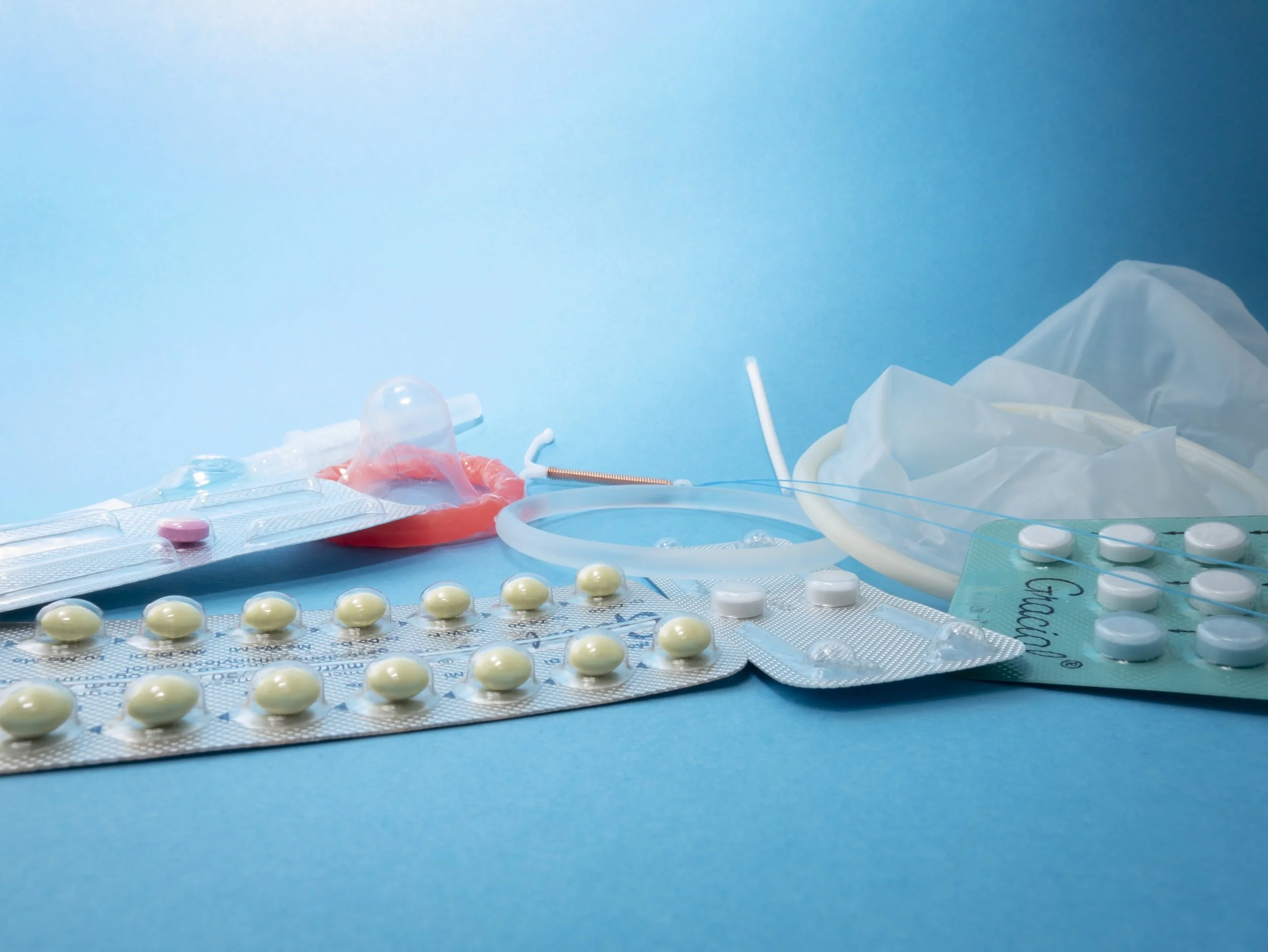Fertility Awareness Methods: A How-to Guide for Natural Birth Control Options
In the 21st century, when women work and childrearing is expensive, birth control is a necessary consideration for most fertile couples. Meanwhile, it seems not a day goes by that we don’t hear about something in our food, water, or medicine that’s making us unwell.
Women have been dealing with the harsh side effects of mainstream birth control for decades now. Doctors tell us that the only reliable way to avoid having too many children is by using hormones or a barrier method. However, it turns out that natural family planning can be just as effective as medical interventions, but without the harsh side effects.
This guide demystifies Fertility Awareness Based Methods (FABMs) of natural family planning. You'll learn how to work in sync with your body's fertile signs, predict the days you're more likely to get pregnant, and take total control of your reproductive health.
Natural Family Planning: An Introduction to the Science
Natural family planning involves strategies that allow a woman to predict her most fertile days of the month. Once she determines the cycle day of highest fertility, she can use that knowledge to either attempt or avoid pregnancy.
Not all natural family planning protocols are equally effective if your goal is to prevent pregnancy. The success of a method depends largely on the fertility signs you track and your willingness to follow instructions completely.
While it's true that older models like the "rhythm method" may not be as effective as a mainstream birth control method, modern strategies are rooted in practical science and can be just as effective as the Pill.
The Menstrual Cycle
Healthy females of reproductive age have a cycle of waxing and waning fertility that lasts about a month, with peak fertility observed around the 14th day. Regardless of how many days it takes, a normal menstrual cycle comprises three key phases:
1. The Follicular Phase
Phase one of the menstrual cycle follows a woman's period and is the part of the cycle that varies in length the most from month to month. During this phase, follicle-stimulating hormone (FSH) stimulates the growth and recruitment of ovarian follicles, which release one or more eggs for fertilization each month.
2. Ovulation
Phase two of the menstrual cycle is the time you're the most fertile. During this phase, luteinizing hormone (LH) surges, triggering the release of a mature egg from the ovary--an event called ovulation. Ovulation prediction kits (OPKs) work a lot like home pregnancy tests and can test for this LH surge in urine. A positive OPK indicates that the next 24-48 hours will be the days of your cycle that intercourse will most likely result in pregnancy.
3. The Luteal Phase
Phase three of the menstrual cycle occurs after ovulation and lasts until your next period of menstrual bleeding begins. While the luteal phase can last anywhere from 10-16 days and varies from woman to woman, the length of your personal luteal phase is likely to stay very consistent from month to month. It is also the time you're the least fertile, meaning that sex is not likely to lead to pregnancy.
During the luteal phase, progesterone prepares the uterus for the possible implantation of a fertilized egg. Progesterone also causes your temperature to elevate slightly, causing a change in your basal body temperature (BBT). BBT is a strong and reliable fertility indicator.
Key Biological Markers in Fertility Awareness
Fertility awareness methods of natural family planning focus on tracking current, objective biological markers. Five key markers include:
Timing (Calendar): Most healthy women have a regular and predictable number of days between periods, making ovulation prediction as simple as counting the days.
Cervical Mucus (CM): Before ovulation, cervical mucus becomes clear, wet, plentiful, and elastic. After ovulation, it changes due to increased progesterone.
Basal Body Temperature (BBT): Post ovulation, BBT increases about half a degree Fahrenheit due to the presence of progesterone.
Cervical position: The internal opening to the uterus is called the cervix. At peak fertility, it tends to be soft, high, open, and wet (SHOW). After menstruation, the cervix tends to feel low, firm, and closed.
Hormonal changes: LH, FSH, estrogen, and progesterone are all detectable in the urine. Home tests are now convenient, private, and affordable.
Popular Fertility Awareness-Based Methods
Now that we have a basic understanding of the menstrual cycle and key fertility signs, we can take a look at some of the most popular protocols.
1. The Calendar Method
Also known as the "rhythm method," the calendar method uses historical data from previous cycles to predict future fertile days. While effective for women with regular cycles, it doesn't account for variations caused by stress, breastfeeding, or perimenopause. The efficacy rate can be as low as 77%.
The calendar method is rarely used on its own and is usually paired with biological markers to make it more effective. The low efficacy of this method is also what brings down the apparent rate of success of all natural family planning methods when reported by outlets that average the success rate of all together.
2. Billings Ovulation Method
A healthy spermatozoa can survive in abundant cervical mucus for several days. But that same sperm will struggle to reach an egg at all if mucus isn't present. The Billings method involves observing changes in cervical secretions to determine your fertile time. Other methods, such as the Creighton model and TwoDay method, build on the same cervical mucus method.
3. The Symptothermal Method (STM)
The STM combines the tracking of cervical mucus observations and basal body temperature (BBT). The cervical mucus provides a clear picture of the start of fertility, while the increase in temperature confirms that ovulation indeed took place. Backed by robust research, STM has a efficacy rate that rivals that of hormonal contraceptive methods.
4. Symptohormonal Method (Marquette)
The Marquette Method, also known as the Symptohormonal Method, uses the Clearblue fertility monitor to measure hormone levels. While the hormone tests alone provide enough information to determine fertile windows, users are encouraged to track mucus and temperature, too.
5. Boston Cross-Check Method
The symptothermal and symptohormonal methods of fertility awareness are both great examples of how you can combine multiple biological markers to create new and highly effective natural family planning protocols. Just about any method can benefit from the addition of urine tests (such as LH or progesterone) or BBT. The Boston Cross Check Method, or BCC, is a comprehensive approach to tracking all signs of fertility.
6. Lactational Amenorrhoea Method
The Lactational Amenorrhoea Method (LAM) is a unique FABM designed for the postpartum period. It relies on exclusive breastfeeding and amenorrhea (the absence of menstruation) for contraception during the first six months after giving birth. It can be more than 99% effective if the child is exclusively breastfed and the mother's period has not returned.
Benefits and Challenges of Fertility Awareness Methods
Benefits
No Pharmaceutical Drugs: FABMs avoid drug-related side effects.
Cost-Effective: Most FABMs require minimal expenses, typically just a calendar and thermometer.
Body Literacy: Women gain a deeper understanding of their bodies and fertility signals.
Relationship Dynamics: Couples often find that working together on family planning strengthens their bond and enhances intimacy.
Challenges
Meticulous Tracking: Requires diligent record-keeping and avoiding unprotected intercourse during fertile days.
Medical Misconceptions: Many medical professionals lack sufficient knowledge of FABMs, highlighting the need for better education in medical curricula.
Commitment Levels: Effective use demands high commitment from both partners, potentially affecting spontaneity in sexual intercourse.
Addressing Irregular Cycles and Conditions
Contrary to popular belief, conditions like PCOS and irregular periods do not disqualify you from using FABMs. Not only is natural family planning a viable option for women with PCOS, but charting fertility can provide insights into irregular cycles and address associated infertility.
FAMs vs NFP
Natural family planning (NFPs) and fertility awareness methods (FAMs) are terms that are often used interchangeably, but they are not the same thing.
All fertility awareness-based methods track fertile days. However, FAMs allow for the use of a secondary contraceptive method, such as a condom, for pregnancy prevention on fertile days.
While using a backup method on fertile days can be convenient and help couples maintain spontaneity throughout the month, using secondary protection during fertile days exposes you to the failure rate of the secondary method–whether that be a condom, diaphragm, spermicide, withdrawal, or another barrier method.
NFP, on the other hand, assumes abstinence on fertile days. This not only renders it a higher success rate for typical use, but it also makes it compliant with religious guidelines against artificial contraceptives, such as those required by The Catholic Church or Orthodox Judaism.
FAQs
Q: Can I use the rhythm method for both contraception and conception?
A: Yes, any fertility awareness-based methods can accurately determine your fertile days. If you want a baby, have unprotected intercourse on peak fertility days. If you wish to avoid pregnancy, avoid sex altogether or use a backup method of contraception, such as a condom.
Q: Does the rhythm method protect against sexually transmitted infections (STIs)?
A: No, the rhythm method does not offer protection against STIs. Natural family planning can help you avoid pregnancy, but only barriers and abstinence can protect you from sexually transmitted diseases.
Q: How effective is the rhythm method?
A: The rhythm method is an early model of fertility awareness. Because it uses historical data to predict your fertile period, it's not as accurate as more modern methods that track biological markers of fertility. Methods of contraception with high rates of efficacy include the symptothermal method, Marquette method, Creighton Model, and Boston Cross Check.
Q: What is the Standard Days method?
A: The Standard Days method is a modern adaptation of the calendar rhythm method. It's designed for women with a menstrual cycle between 26 to 32 days and can be facilitated by simple tools like CycleBeads.
Summary
Fertility awareness methods offer a natural, cost-effective, and empowering approach to family planning. By understanding and tracking key fertility indicators, individuals can gain control over their reproductive health, whether to achieve or avoid pregnancy. Although relying on a fertility awareness method requires commitment and proper education, it's never too early or too late to ask for help.






